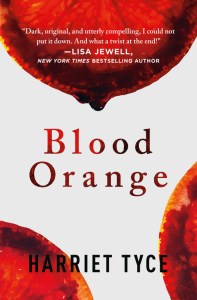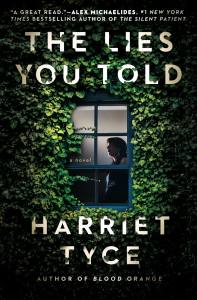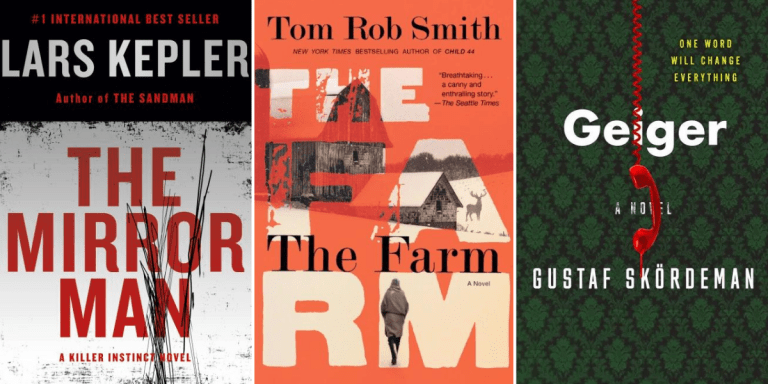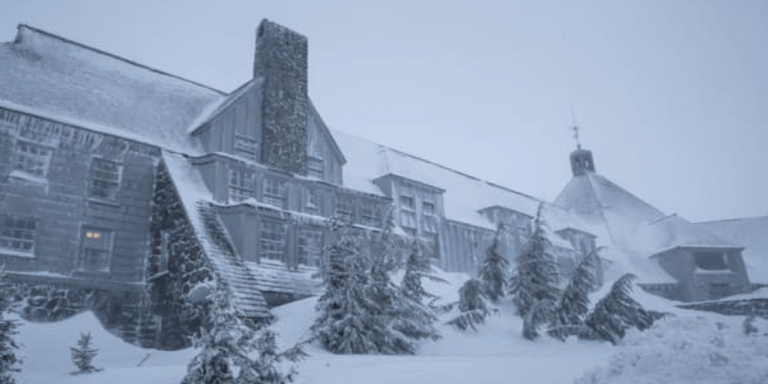New Year’s Day Reflections With Harriet Tyce
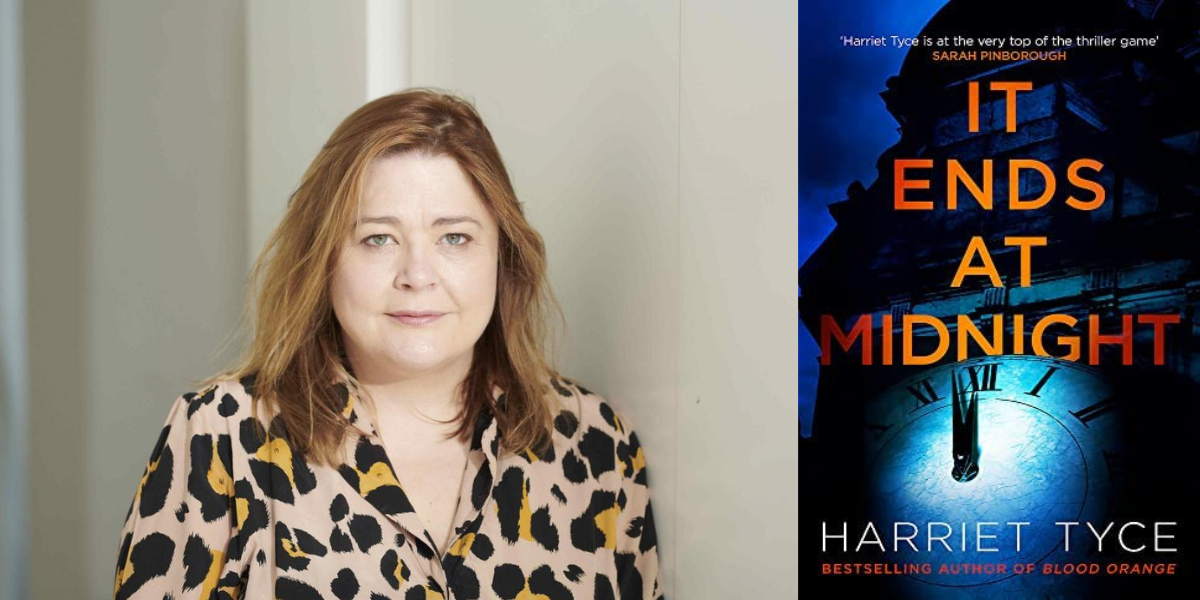 A day of regrets, resolutions. Hope, maybe. A little hungover, the house still full of decorations and leftovers from the festive season. Maybe it’s a good one, maybe you haven’t wanted to kill your family or divorce your spouse. Maybe your kids were grateful, thanked you for the gifts that you took so long to choose. However it’s turned out, I hope it hasn’t been as bad as the way that two of my characters bring in the New Year, impaled on railings and bleeding out onto the pavement below.
A day of regrets, resolutions. Hope, maybe. A little hungover, the house still full of decorations and leftovers from the festive season. Maybe it’s a good one, maybe you haven’t wanted to kill your family or divorce your spouse. Maybe your kids were grateful, thanked you for the gifts that you took so long to choose. However it’s turned out, I hope it hasn’t been as bad as the way that two of my characters bring in the New Year, impaled on railings and bleeding out onto the pavement below.
I’m writing this on 1st January 2023. That’s the first time I’ve typed out the year, and it still looks strange and new. It feels strange and new, too, that this is the second New Year’s Day in a row that I’ve seen in sober. Apart from one night (6th June, to be precise), I didn’t drink at all last year, and I plan to maintain that into 2023 and beyond.
It’s helped this festive period no end. The usual flashpoints over cleaning and cooking duties, yet another meal to be washed up and put away; they’ve been muted this year, not inflamed by the usual injections of sauvignon blanc and Barolo which have fuelled so many rows in my house in the past. Last night we hosted a Hogmanay dinner and after midnight I drove up to a house way at the end of the Piccadilly Line in London to collect my teenage daughter from a party. It was the right way round.
I’ve spent a lot of time this year debating the use of the word alcoholic and whether it applies to me. I started sobriety and have maintained it not with the assistance of group support like AA, although I’d be open to it if necessary. I’ve talked a lot about recovery and what it means to me, and by and large I’ve spent a lot of time in gratitude that I’ve found my way to this.
I’ve also thought a lot about how it started, where the seeds of it were sown. I grew up in Scotland, a country with its own troubled relationship with alcohol. The Eskimos might have fifty words for snow but I found one report that said that the Scots have over seventy words for being drunk. Hammered, blootered, steamin, wrecked, oot yer tree, steamboated, pie-eyed, sloshed. I could go on. Binge drinking is a national pastime and as a teenager I excelled at it. Downing a pint in three seconds was one of my proudest feats.
As the saying goes, though, it’s all fun and games until somebody loses an eye. What looks good as a teenager starts to be much less attractive in your forties or fifties. The cool rebel smoking a cigarette is considerably less sexy when they develop a hacking cough and tight lines purse up from their mouth. You might think you’ve got away with it, all those blacked out nights and hungover mornings, but somewhere something cracks, a tiny fault line that quietly grows wider and wider in the dark, until it comes bursting open into the light; a full-blown addiction, health problems, or the terrible thing that you thought no one ever knew, that you thought you’d got away with, that comes roaring back ready to get you like Robert de Niro bursting out of the dark in Cape Fear.
That’s what happens in It Ends At Midnight. It’s set mostly in the present, but there’s a timeline set in 1989-1990 when the main characters Tess and Sylvie meet at school. It’s the last two years of high school and they’re starting to party in the way that teens the world over party, experimenting with drink and boys, seeing what life has to offer. I was 17 in 1989 and it’s fair to say that a lot of that storyline is inspired by experiences I had as a teenager. The good ones, at least, as I say in my acknowledgments. Shots of tequila, bottles of Baileys necked like water, staggering around the Royal Mile on a New Year’s Eve many decades ago. The fun stuff.
Teenagers think they’re invincible, that the decisions they make in the now will have no future ramifications. It doesn’t ever occur to them that there might be consequences. I remember it myself, I see it happening now as I watch my kids navigate the teenage years. My characters Tess and Sylvie are exactly the same. They party hard without care, and even when it gets bad they turn a blind eye, preferring just to have another shot than to sit down and properly analyse the consequences.
When I started knocking back the hard stuff, I never thought I’d have to stop completely before I turned fifty. When Tess and Sylvie go to a beach party to celebrate the end of high school, they think it’s going to be the best night of their lives. They have no idea that what happens then, the terrible thing that takes place on the shores of the North Sea in the summer of 1990, will set in place a series of events that will lead eventually to impalement and misery, a slow lingering death on a cold New Year’s Day some thirty years later. If they knew, would they have acted differently? If I’d known how much damage it would cause, would I have put down the bottle of peach schnapps and picked up a coke instead?
I doubt it. Teenage kicks, so hard to beat… and let’s face it, without the mistakes, the drunken disasters, the stories would be a lot less fun.
Discover the Book
It's New Year's Eve and the stage is set for a lavish party in one of Edinburgh's best postcodes. It's a moment for old friends to set the past to rights - and move on.
The night sky is alive with fireworks and the champagne is flowing. But the celebration fails to materialize.
Because someone at this party is going to die tonight.
Midnight approaches and the countdown begins—but it seems one of the guests doesn't want a resolution.
They want revenge.
From the acclaimed author of Blood Orange, comes a thriller of a party spiraling into murder, when one guest's plan to right old wrongs ends in blood, told with Tyce's signature dark and propulsive twists.
Alison has it all. A doting husband, adorable daughter, and a career on the rise–she’s just been given her first murder case to defend. But all is never as it seems…
Alison drinks too much. She’s neglecting her family. And she’s having an affair with a colleague whose taste for pushing boundaries may be more than she can handle.
Alison’s client doesn’t deny that she stabbed her husband – she wants to plead guilty. And yet something about her story is deeply amiss. Saving this woman may be the first step to Alison saving herself.
But someone knows Alison’s secrets. Someone who wants to make her pay for what she’s done, and who won’t stop until she’s lost everything….
When Sadie Roper moves back to London, she’s determined to pick up the pieces of her shattered life. First, she needs to get her daughter settled into a new school-one of the most exclusive in the city. Next, she’s going to get back the high-flying criminal barrister career she sacrificed for marriage ten years earlier. But nothing goes quite as planned. The school is not very welcoming newcomers, her daughter hasn’t made any friends yet and the other mothers are as fiercely competitive as their children. Sadie immediately finds herself on the outside as she navigates the fraught politics of the school gate.
But the tide starts to turn as Sadie begins to work on a scandalous, high-profile case that’s the perfect opportunity to prove herself again, even though a dangerous flirtation threatens to cloud her professional judgment. And when Liza, queen of the school moms, befriends Sadie, she draws her into the heart of the world from which she was previously excluded. Soon Sadie and her family start to thrive, but does this close new friendship prevent her from seeing the truth? Sadie may be keeping her friends close, but what she doesn’t know is that her enemies are closer still…
By clicking 'Sign Up,' I acknowledge that I have read and agree to Hachette Book Group’s Privacy Policy and Terms of Use
What to Read Next
